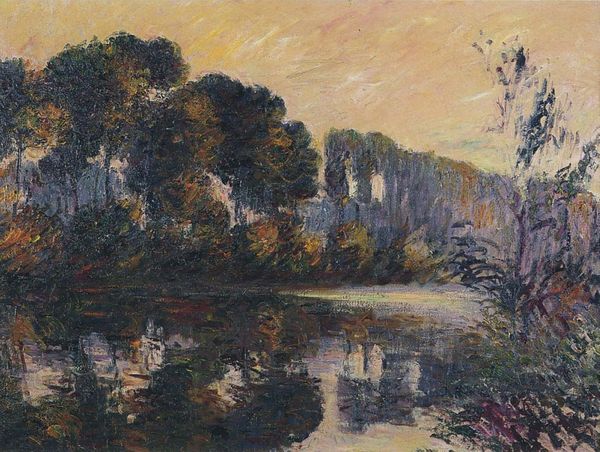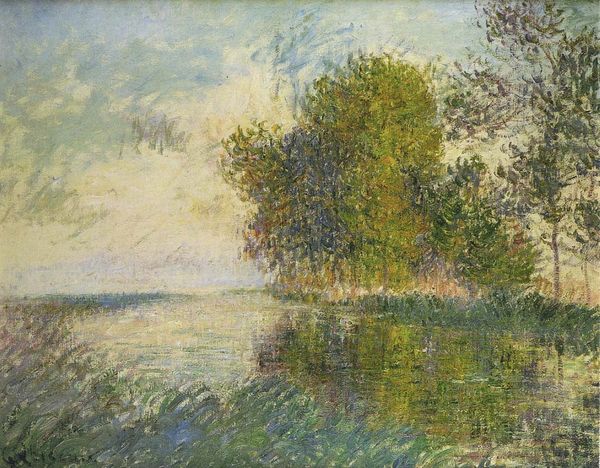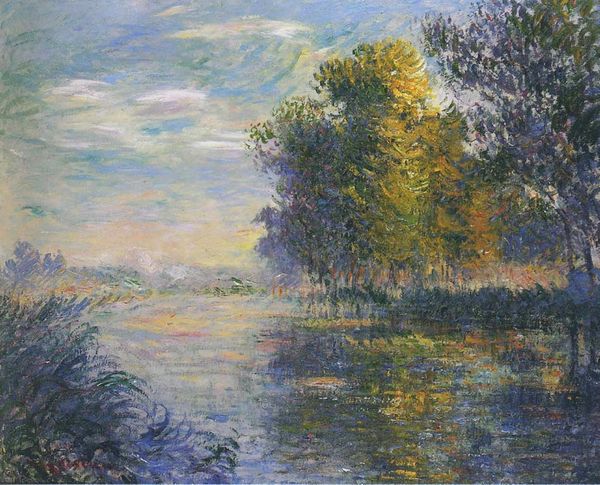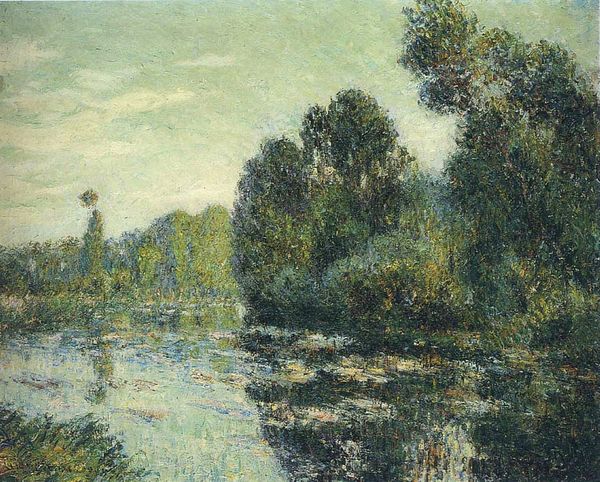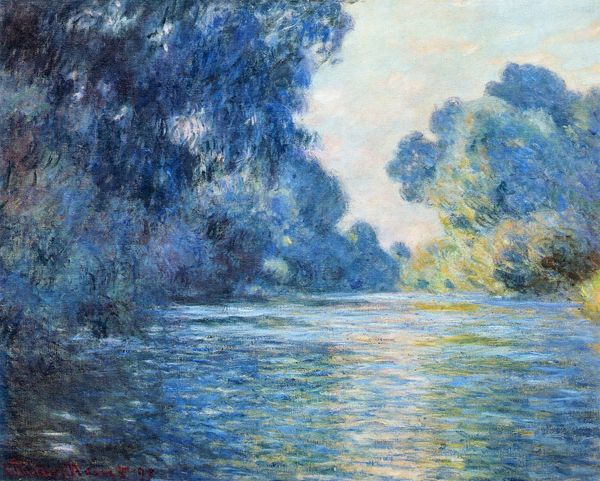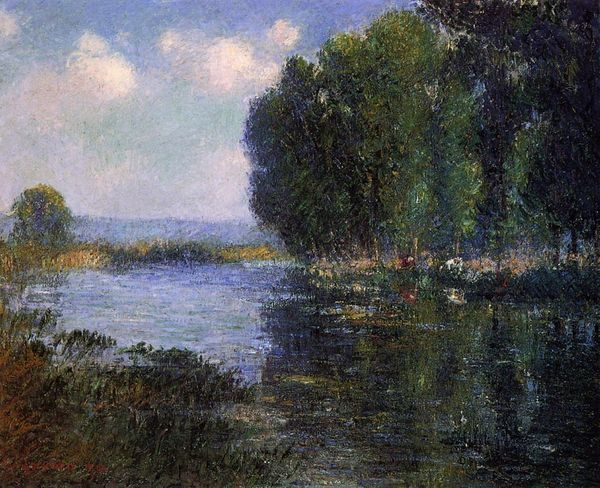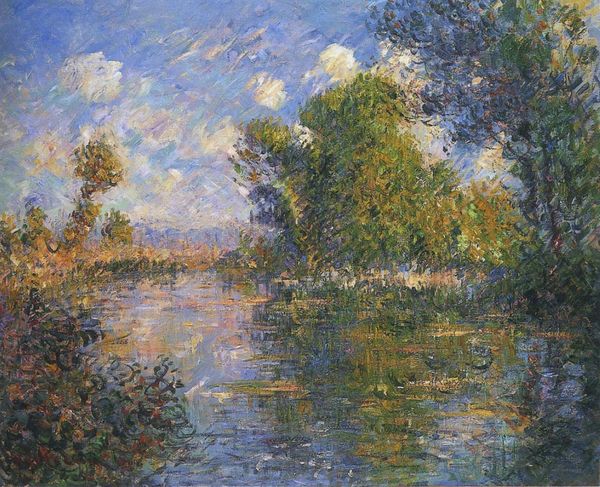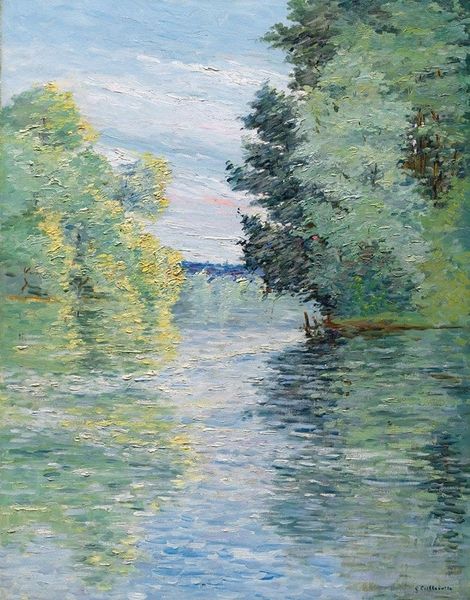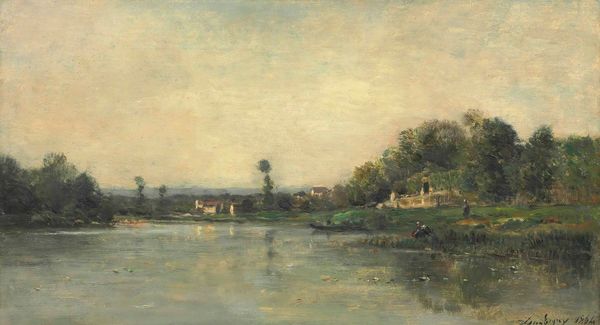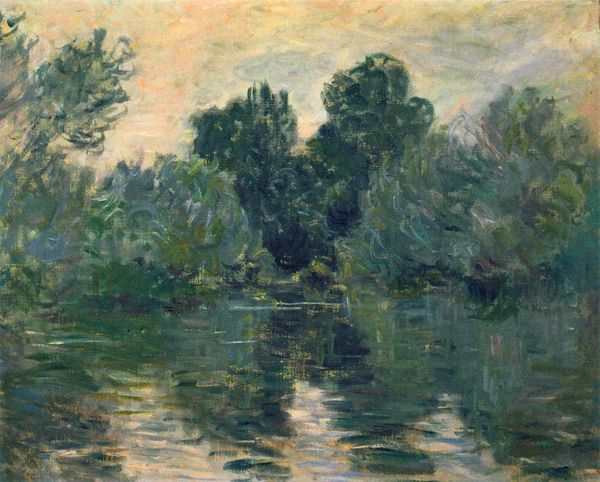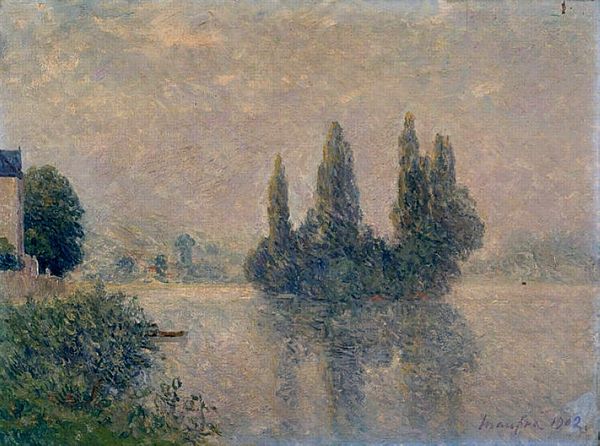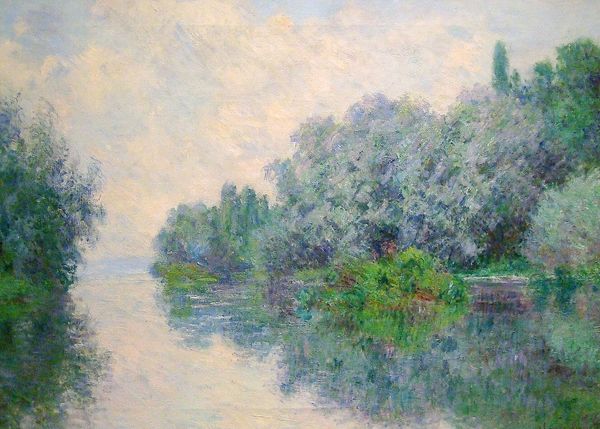
painting, plein-air, oil-paint
#
tree
#
sky
#
painting
#
impressionism
#
plein-air
#
oil-paint
#
landscape
#
impressionist landscape
#
nature
#
oil painting
#
seascape
#
cityscape
Copyright: Public domain
Claude Monet made this painting, Evening Effect of the Seine, with oil on canvas. It's tempting to focus on the finished image and the overall impression of light, but let’s consider the materiality of the work. Oil paint is essentially colored pigment mixed with linseed oil. The way Monet has applied it here is crucial, with short, visible brushstrokes. He's not trying to hide the fact that this is paint on canvas, but rather emphasizing the handmade quality of the work. This directness relates to the broader shift toward modernism. Artists like Monet were part of a move away from the highly polished, illusionistic surfaces of earlier academic painting. Instead, they embraced a more immediate, sensory experience. The repetitive dabs of paint also speak to the labor involved in creating this image. Think of Monet standing en plein air, working diligently to capture the fleeting effects of light on the Seine. There’s a connection to the working-class realities of the time. While Monet certainly wasn't a laborer in the same sense as someone working in a factory, his art-making process reflects a similar engagement with physical effort and repetitive action. By focusing on the materials and the making of the work, we begin to understand the painting not just as a representation of a scene, but as a record of a particular moment in time, and a testament to the artist’s labor.
Comments
No comments
Be the first to comment and join the conversation on the ultimate creative platform.
